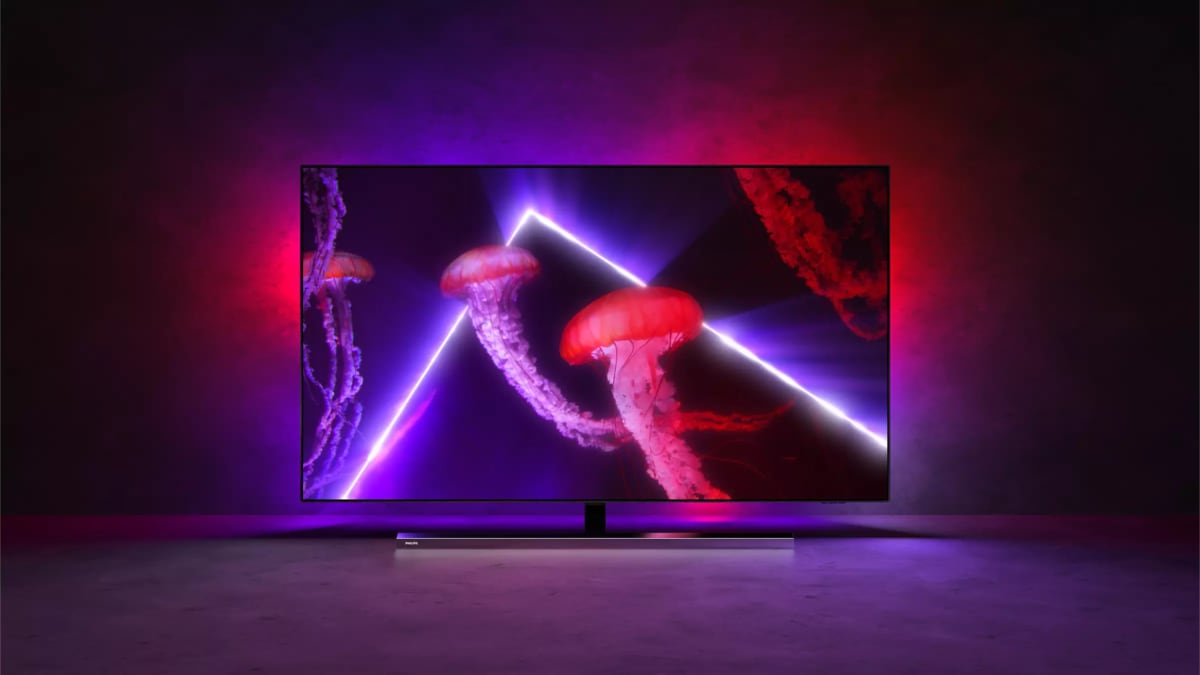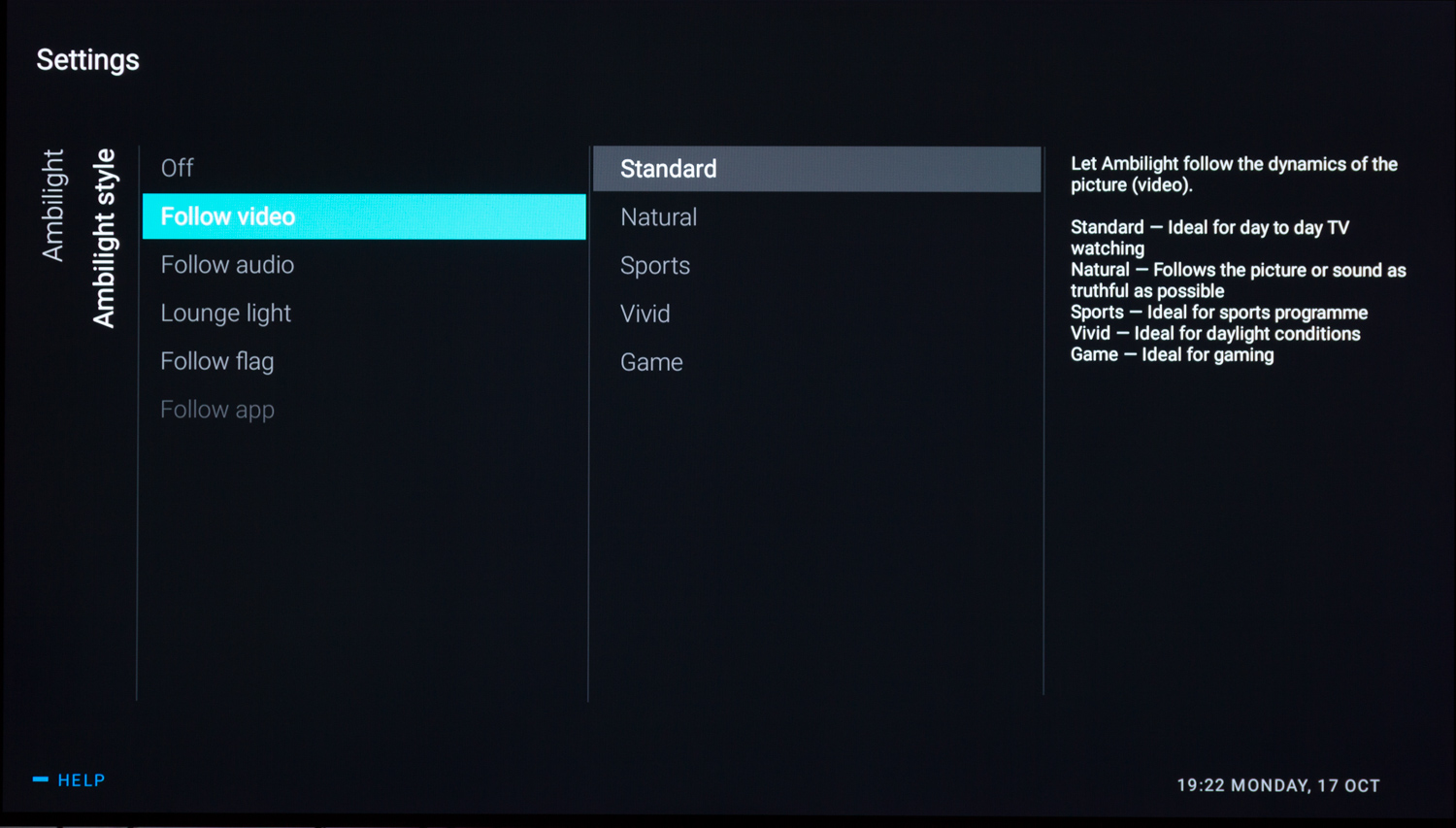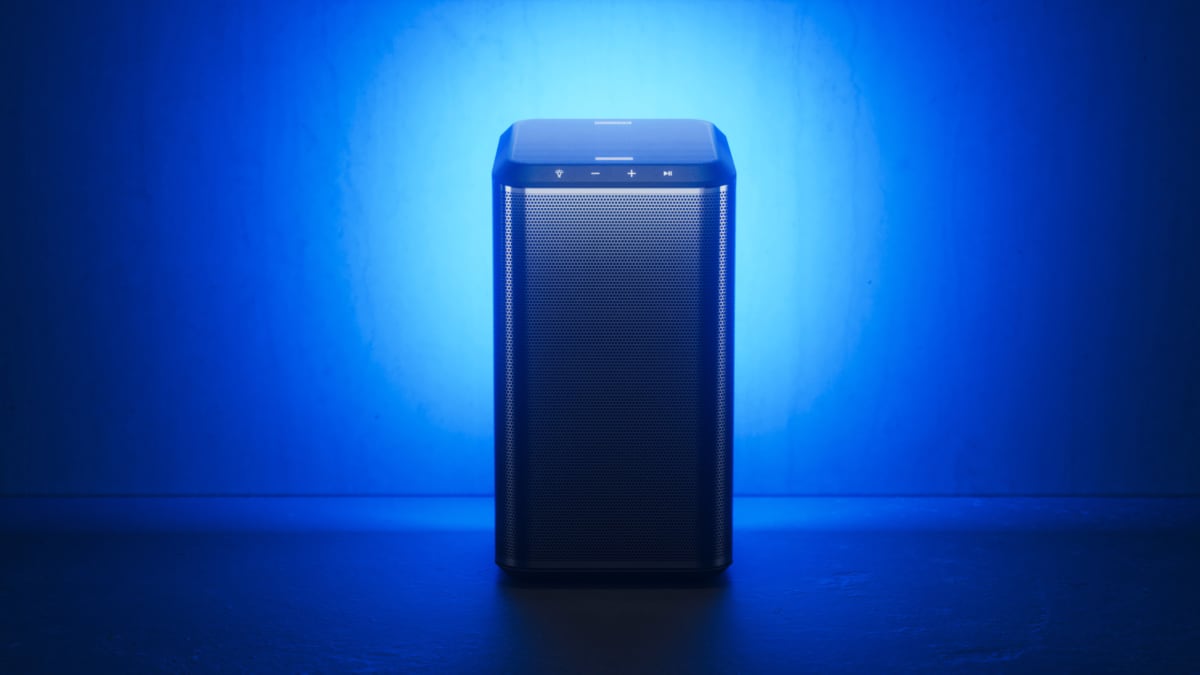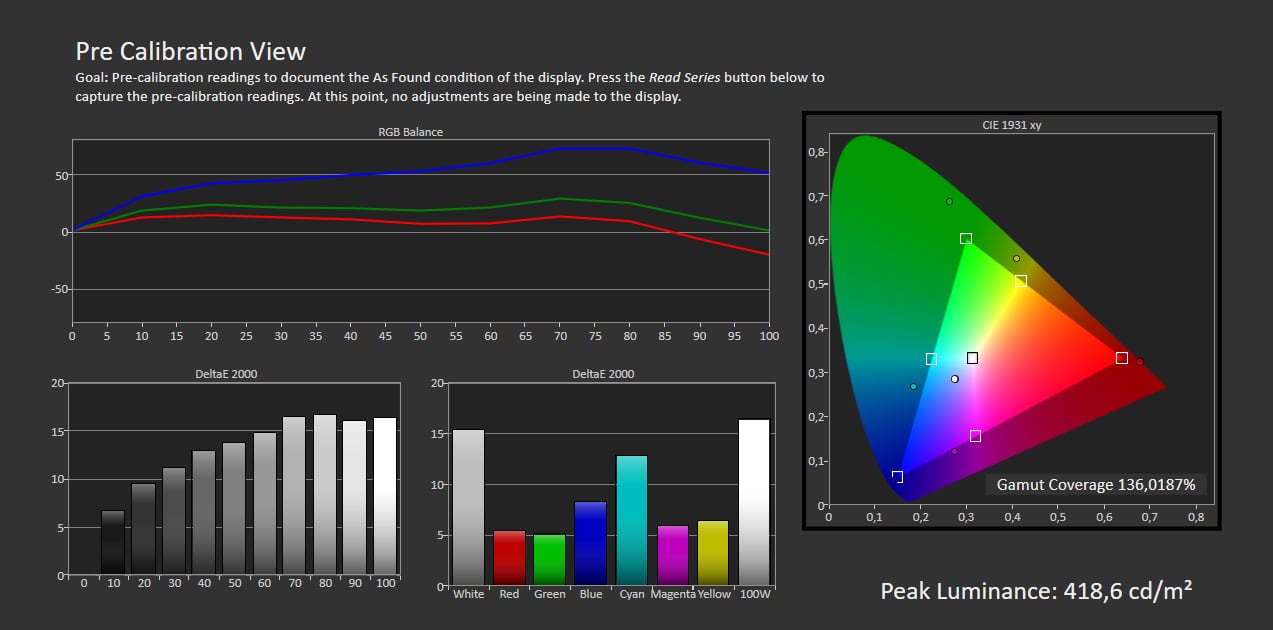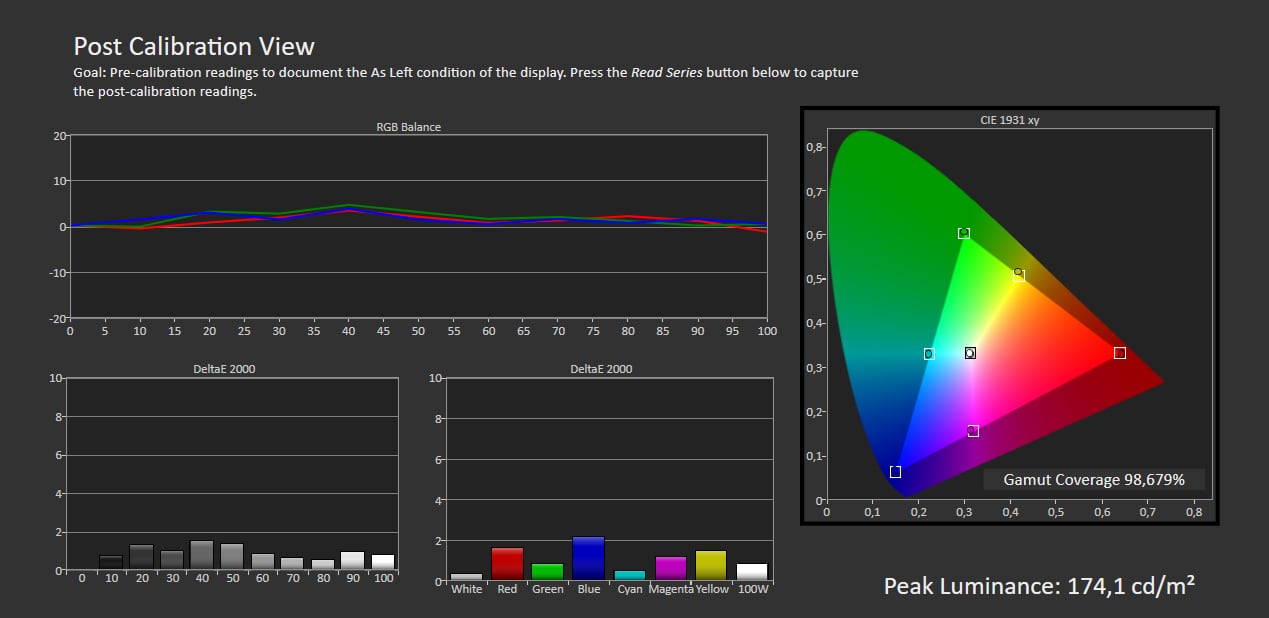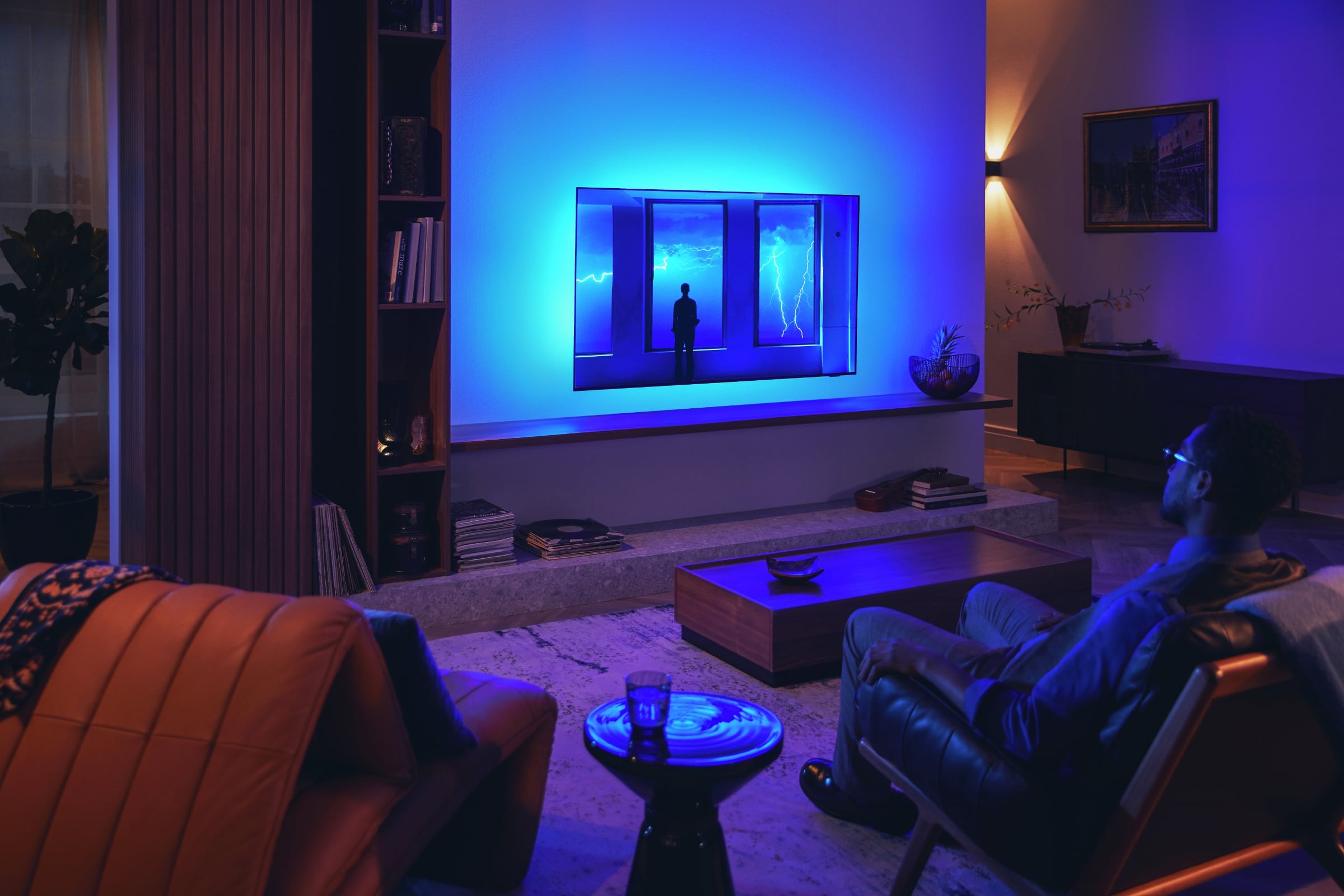Review: Philips OLED807
This year's 8-series OLED TVs from Philips comes with the more efficient OLED EX panel, the company's latest 'AI' P5 video processor, and Android TV. It is available in 48, 55, 65 and 77 inches and we have tested the 65 inch version. Note that the 48-inch version does not feature the more efficient EX panel. Also read: Philips 2022 TV line-upThere are no other big developments this year. Overall Philips OLED807 delivers great picture quality that is affordable and it once again underlines the point that the WOLED panel is a guarantee for great picture – although it may require a few tweaks to picture settings. If not for the launch of QD-OLED TVs this year, Philips OLED807 would be one of the best TVs available on the market. QD-OLED offers a little extra in peak brightness and color – but is not perfect either – that puts them slightly ahead of WOLED, but QD-OLED is also more expensive.Price and retailers:
First impressions
Philips TVs tend to be very minimalistic but like most other OLED TVs only the upper part of the TV is slim whereas the lower part is thicker to make room for the power supply, electronic components, tuners, and more. One characteristic of Philips' high-end models is the bass port visible as an exposed membrane located on the back of the TV. TV makers usually tweak their design every year and OLED807 now has a T-shaped stand as opposed to the twin-feet design from earlier 8-series models. The T-shaped stand is a little harder to install but once it is up it lets you swivel the TV manually from left to right. In addition, a center-aligned stand fits on top of a narrower TV rack. It extends beyond the TV's front but it just tall enough to accommodate a soundbar such as Sonos Arc underneath the TV. All four HDMI ports support ARC (Audio Return Channel) but be aware that only one supports eARC so make that you use the right one if you own an external surround sound or Dolby Atmos system. Ambilight is synonymous with Philips and OLED807 – like OLED806 from 2021 – is equipped with 4-sided Ambilight meaning that the LED mood lighting system can illuminate the wall behind the TV on all four sides. To get the full benefit of Amblight the TV must be placed approximately 15 centimenters away from the wall to ensure that the light diffuses properly and that it extends to a large enough area. Ambilight was conceived as a mood lighting system that matches the colors in the picture. The user has always been able to turn off the system but over the years Philips has added various profiles and features. You can select a static color tone and match it to the color of the wall if you want it to work as "bias lighting". In its dynamic mode Ambilight matches the colors of the picture but you can also make it follow the beat of music with Spotify or if you want to go all-in you can syncronize Ambilight to Hue products in your living room for a more immersive mood lighting experience. Picture purists may scoff at the notion of mood lighting but Ambilight is now so flexible that you can use it in a variety of ways or simply turn it off completely. If you are worried about the energy bill, we can add that Ambilight adds only 5W to the TV's power consumption when activated.User experience & features
It is a little surprising to see Philips OLED807 come with Android TV instead of Google TV and therefore not the latest user interface and features. We have examined and documented both Android TV and Google TV extensively in previous reviews. Since with are dealing with Android here we can expect Android upgrades later on which is one of the advantages of buying an Android TV over a TV with, for example, webOS or Tizen. Neither of these two get upgraded to later versions – only next year's TVs come with the latest version. We will not delve deep into Android TV here again as it works more or less the same way in all Android TVs. Still, we should highlight that you have access to all of the well-known streaming apps including Disney+, HBO Max and Netflix. Alternatively, you can use the built-in Chromecast function. Last year, Philips moved to the MediaTek MT5895 SoC which is also found in this year's OLED807. Philips refers to it as MT9970B but it is more or less the same SoC found in Sony's Android TVs / Google TVs with similar HDMI 2.1 features. CPU/GPU performance is decent but cannot match an external box such as Nvidia Shield and is not close to matching Apple TV 4K. Gaming has not taken off on the Android TV platform so most users will most likely find it good enough for streaming and general use. Philips has launched a new gallery function this year called Aurora. It is an app containing various wallpapers – both static and moving wallpapers – combined with Ambilight mood lighting. At launch, it is not possible to use your own photos but the company is looking into possibly enabling it, they told us earlier this year but stressed that they cannot promise anything. Aurora is not a screensaver or "off function" meaning that you must enable it manually unlike the gallery function found in Samsung The Frame and 2022 LG OLED TVs. It is instead more similar to the gallery function you find in slightly older LG TVs or Samsung "QLED" LCD models. Rising energy costs in Europe may make Aurora seem less attractive at this time and compared to Samsung's version in The Frame Aurora it seems less polished.Operation
A couple of years ago, Philips introduced a redesigned remote control without the clunky qwerty keyboard on the back. OLED807 comes bundled with a silver version of the latest remote control, still with spongy buttons and too many of them. In our view, Philips could easily remove half of the buttons without compromising the user experience. If you like me no longer use the built-in tuners, you have no use for the 0-9 buttons and channel selectors. And if you use the built-in streaming apps it would be more useful to have user-customizable app buttons than the four sponsored buttons. Philips' settings menus are easy enough to navigate but there are too many layers meaning that it requires too many buttons presses to reach, for example, picture settings. 95% of users probably never use the advanced settings as the descriptions make little sense but since Philips leaves a couple of picture enhancement systems or algorithms activated in all picture modes we encourage our readers to try and find their way inside to deactivate systems such as artificial sharpness or motion smoothing – read our calibration section.TV audio
HDMI eARC found its way to Philips TVs last year to let you pass uncompressed audio to external sound systems. It is naturally still supported in OLED807. If you do not want to connect an external sound system Philips OLED807 comes with better-than-average speakers built-in. Part of the explanation is the "subwoofer" on the back. The TV also supports Dolby Atmos decoding for internal and external use, but despite the decent speakers you should not expect an immersive Atmos experience as OLED807 simply lacks the speaker hardware. By connecting a soundbar via eARC you can output both Dolby and DTS audio formats. However, like so many times before we experienced sporadic HDMI ARC issues that led to the TV losing connection to the soundbar. It required us either to switch to and back to the soundbar or to stop and start the movie again. In our 2019 review of OLED934, we noted that the ARC connection would occasionally produce crackling sound and the same thing happened on OLED807. It takes away some of the joy of watching a Dolby Atmos movie. For some time, Sony OLED TVs have offered a function to let the user connect an external sound system and let the TV's speakers act as the center channel. In our Sony HT-A9 review we highlighted this as a unique feature from Sony. Last year, Philips announced a similar function with DTS Play-Fi Home Theater integration that allows the user to connect compatible speakers wirelessly to the TV while also supporting Ambilight extension to rear speakres. OLED807 is one of the TVs that support 'DTS Play-Fi Home Theater' and in the latest version it is also possible to include the TV's speakers into the setup. We did not have DTS Play-Fi speakers available to test it.Calibration
Getting a TV's picture to match the content creator's intention should be the ultimate goal for a TV maker but unfortunately this tends to sell fewer TVs on the show-floor as accurate picture settings produce less vivid pictures at first glance. For the same reason TV makers offer a myriad of picture modes that boost the picture in various ways, i.e. sharpness, color, contrast, motion etc. In some of its picture modes, OLED807 uses the full palette of "a little extra" picture enhancements.As usual, there are too many picture modes to select from and any user is bound to be confused. We continue to encourage TV makers to clean up and simplify. We cannot imagine any single user out there who wants so many marginally different picture modes to choose from. The purist only needs one which is a calibrated mode. A Game mode can also useful but with ALLM (Auto Low Latency Mode) that automatically switches the TV to game settings, one could imagine an all-in-one solution that simply deactivated additional processing to bring down input lag. As usual, we use the Expert mode or similar, depending on the manufacturer, as a starting point for our calibration as it is the most accurate picture mode. Philips has several good picture modes to choose from including Filmmaker Mode and a Calman profile for auto-calibration. Like other OLED TVs, manual calibration of OLED807 is relatively simply and only a few adjustments were needed to get close to our reference. Philips TVs – like Sony TVs – offer multiple setting options for adjusting luminance including an option to define the maximum level. Unfortunately, this setting is shared between SDR and HDR10 so adjusting brightness to look optimal in SDR will make the picture look too dark in HDR. We therefore recommend using Expert 1 for SDR and Expert 2 for HDR10, with the only difference being the setting for 'Light Boost'. Dolby Vision has its own – additional – picture modes and is not affected. Philips OLED807 has one of the so-called OLED EX panels from LG Display that is said to deliver up to 30% of additional brightness. Unfortunately, to reach 1000 nits on OLED807 you are still required to use one of the more dynamic modes that do not deliver accurate picture quality. It is possible to increase peak brightness in these modes because the color temperature of white is much higher (more bluish). In the Expert picture mode peak brightness lands on a more moderate 740 nits. It has a slightly brighter HDR presentation in the mid-tones than intended. Since this is a WOLED panel it has lower coverage of the Rec.2020 color space used for HDR content than TVs with QD-OLED panels such as Sony A95K and Samsung S95B. We measured roughly the same coverage of DCI-D3 and Rec.2020 as other WOLED-based TVs.Other picture modes
Click the title to expand the view
SDR Crystal Clear SDR Personal SDR Monitor SDR Home Cinema SDR Expert1 SDR Expert2 SDR Filmmaker Mode HDR Crystal Clear HDR Filmmaker mode Measurements
In our "measurements" section we include all measurements and our suggested calibration settings. If you want to learn more about our test methodology click here. Note: Starting in 2021, we implemented a new method for measurement of average power consumption in SDR and HDR, meaning that earlier measurements are not 1:1 comparable. Power consumption in 'Calibrated' SDR mode is measured with the screen to approx. 100-110 nits to normalize the measurement across TV models (our recommended calibrated picture settings may differ). The new method will be used in all TV reviews going forward.Note: We include calibration settings only for SDR, not HDR. For our calibration we have deactivated the ambient light sensor that automatically adjusts the backlight setting according to your environment. You may prefer to have it enabled.Picture quality
Most major TV makers have started promoting their video processors as capable of "AI” (Artificial Intelligence) and Philips has for a few years highlighted how its TVs can adapt picture settings to the type of content and ambient conditions in your living room to enhance sharpness, contrast, color, and brightness scene-by-scene. Philips OLED807 is also capable of automatically changing the picture mode. These picture enhancement systems, which are the default on many TVs including OLED807, can be deactivated if you dislike the artificial look that they create. In other words you need to adjust picture mode / settings after setup if you want accurate picture quality. As discussed in the calibration section, the Expert picture mode is the best starting point. After some tweaks, Philips OLED807 delivers the same great picture quality that we have come to expect from the WOLED panel including extremely high contrast, true black, and pixel-level luminance and color control. With just the minor tweaks detailed in the calibration section, color accuracy lands very close to the reference which is no longer unusual for OLED TVs but still impressive considering the price – you no longer need to buy the most expensive TV models. These tweaks will take you less than 10 minutes. If we had to put our finger on something it would be panel banding, seen on our smooth gradient tests, but we hardly ever spotted it in movies so it was not a big concern. Peak brightness is not as high as we have seen on some other OLED EX-based TVs such as LG G2 but similar to LG C2 which, similarly to Philips OLED807, comes without a heatsink. Despite its OLED EX panel, OLED807 does not stand out from the pack in this regard. In fact, we measured lower peak brightness on our sample of OLED807 than on OLED805 in 2020. We hope that the lower brightness combined with the more efficient OLED EX panel prolongs lifetime but we cannot substantiate this hypothesis in any way during our relatively review period. If you want more than 1000 nits you must use one of the more dynamic picture modes which is not something we can endorse or recommend. Philips OLED807 supports all relevant HDR formats; Dolby Vision, HDR10, HDR10+, and HLG. Dolby Vision appears to be taking over in the premium segment so even though a few streaming services and UHD Blu-ray discs use HDR10+ you will be watching HDR10 or Dolby Vision most of the time when you are not watching SDR. Philips TVs offer multiple options to enhance motion including motion interpolation that the company was one of the first TV makers to embrace. You can still use traditional motion interpolation, if you want, but a more recent addition is 'Pure Cinema' that is designed to reduce stutter playing video in low frame rates such as 24fps used for basically all movies today, which in our opinion is what TV makers should focus on as opposed to motion smoothing. The next step would be for content creators to increase the frame rate which is something Hollywood is still experimenting with. This is required to obviate the need for motion systems, especially with brighter HDR scenes and OLED TVs due to their extremely fast response time. Philips OLED807 features two HDMI 2.1 ports with support for 4K120 and VRR in combination with the latest game consoles, PS5 and Xbox Series X. The TV automatically detects a game in the HDMI signal (ALLM) and switches to its fastest picture mode which reduces input lag to less than 16 ms (with a 4K 60Hz signal). At this time, we cannot measure input lag in VRR or 120Hz mode but it will be even lower here. OLED807 no longer has the same limitation for peak brightness in Game mode that we found on OLED805 in 2020 so all things considered OLED807 is a better choice for console gaming in HDR. In addition, Philips has this year introduced a Game bar that provides quick access to various game optimizations and functions. You can access it be holding down the Menu button. This menu also provides information on the input signal. Our sample of OLED807 did not have perfect panel homogeneity in the darkest tones of the picture and we also noticed a red tint in the left side of the panel, as seen in our long-exposure photos below. It was not really an issue in day-to-day use but WOLED in general still leaves room for improvement.
Conclusion
Ad:
Philips keeps up when it comes to picture quality and features. The two HDMI 2.1 ports enable VRR, 4K120 and eARC. Philips has also reduced input lag and improved Ambilight that can now extend to Philips Play-Fi speakers. The OLED EX panel's peak brightness is not as high as the brightest OLED TVs on the market or our reference TV but high enough to ensure an excellent HDR viewing experience in combination with OLED's other picture characteristics.
Philips is still using Android TV without Google TV on top. There is no word on whether Google TV will come to OLED807 but Philips is planning to provide Android upgrades in the future which is one area where Android TV differs from a Smart TV based on, for example, webOS and Tizen as these do no get OS upgrades after the sale.
QD-OLED has taken the crown in 2022 but if you are looking for a value-for-money OLED TV Philips OLED807 should definitely be on your shortlist. It is a great choice for movie watching, gaming, and other purposes, and it receives our Highly Recommended Award.
Price and retailers:
Great picture quality
Decent TV speakers
Ambilight if you love mood lighting
HDMI 2.1 ports & features
Not updated to Google TV
Sporadic ARC issues
Requires some picture adjustment
Only two HDMI 2.1 ports


